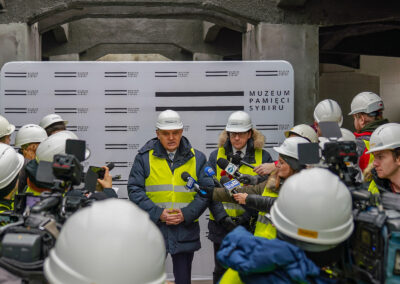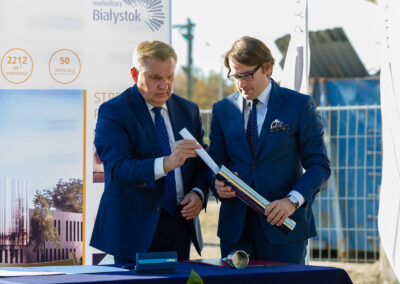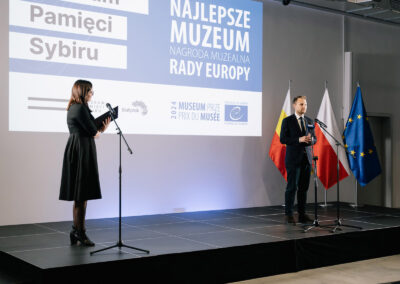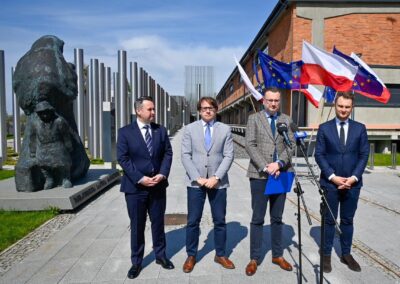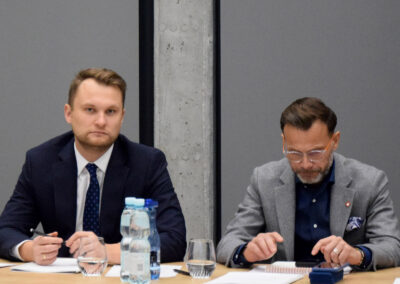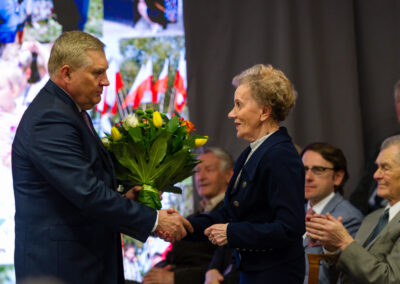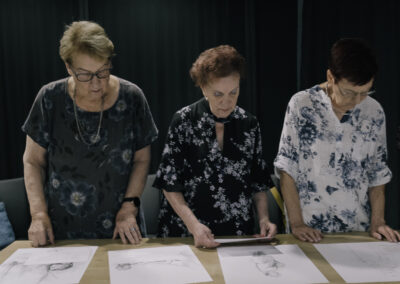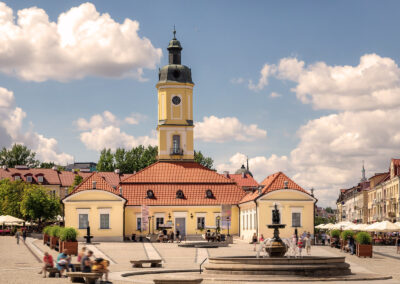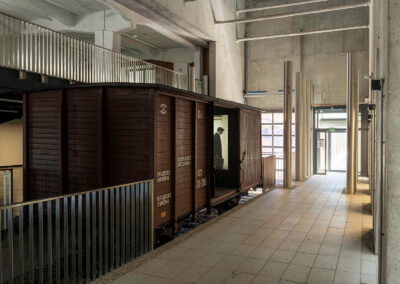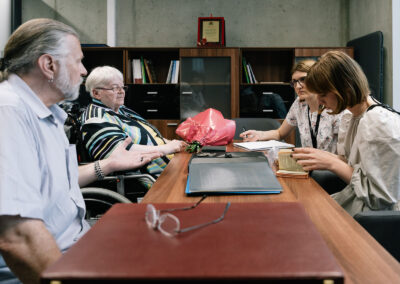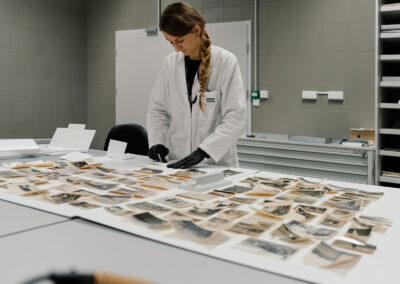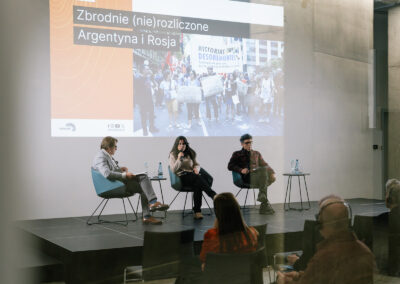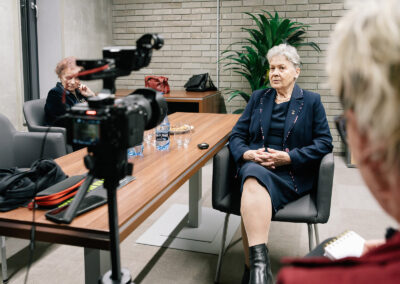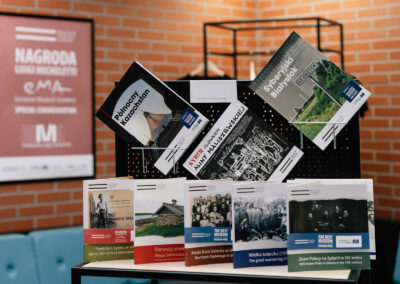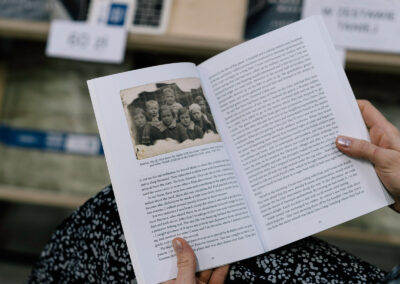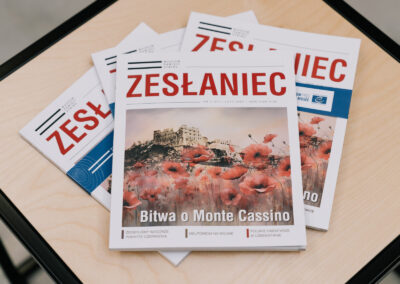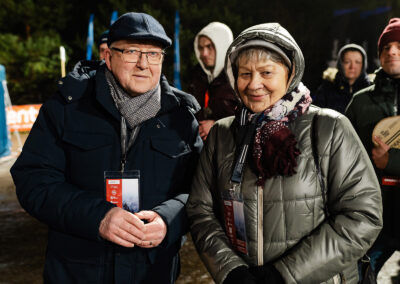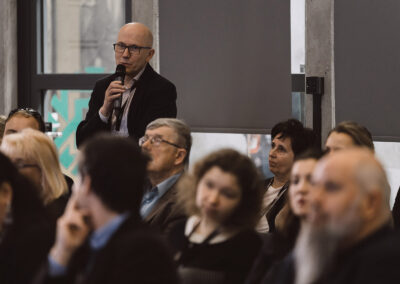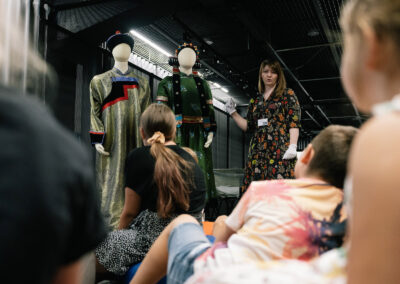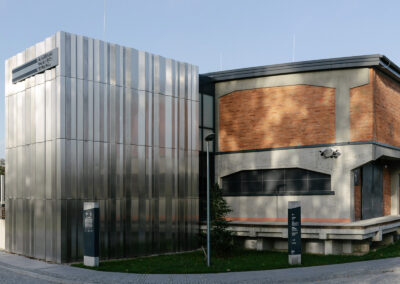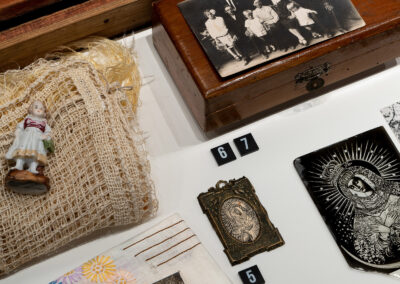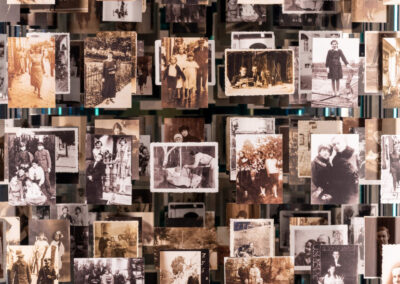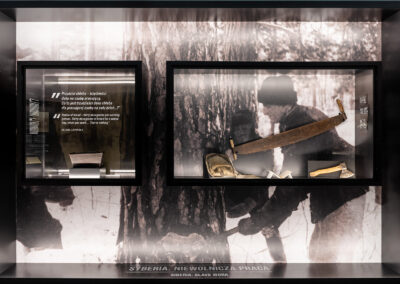The Sybir Memorial Museum – Host of EMYA2025
The Sybir Memorial Museum is the only institution in the world commemorating mass deportations, forced resettlements, and other repressions that affected Poles and representatives of other nationalities living in Poland (Belarusians, Lithuanians, Ukrainians, and Jews), carried out by Tsarist Russia and later the Soviet Union. It is also a place that brings the communities of Central and Eastern Europe together, which in the 20th century found themselves within the terms of influence of Soviet totalitarianism and experienced similar repressions.
The Sybir Memorial Museum conducts scientific, educational and publishing activities being in the same time involved in the international discourse on the crimes of totalitarianism. As a distinction for its achievements, the Museum was honored with the Council of Europe Museum Prize in 2024 and it was also honored by hosting the next edition of the awards – EMYA2025.
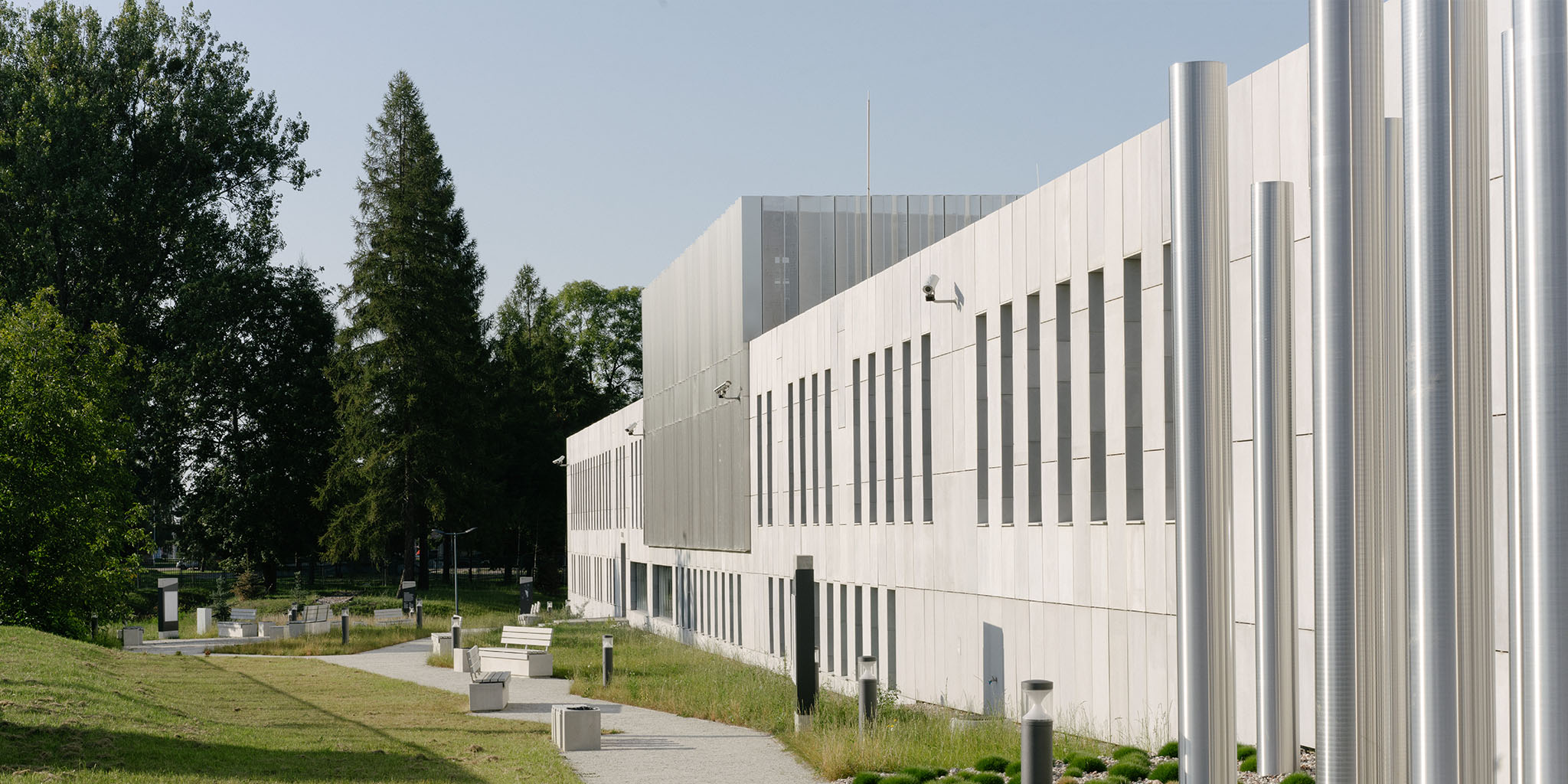
Long awaited commemoration
The first concepts of commemorating the experiences of forcibly resettled communities from territories historically belonging to the Polish state deep into Russia and the Soviet Union appeared in Poland already in the interwar period. Attempts of implementing them were interrupted by the outbreak of World War II, after which Poland was under the Soviet sphere of influence and the topic was abandoned due to be politically “inappropriate”.
The idea of creating a center commemorating the deportations and resettlements was revived in the 1990s. It was finally implemented in Białystok, a city particularly affected by these repressions. In 2021, the Sybir Memorial Museum was opened here.
More than Siberia
The word “Sybir” used in the Museum’s name does not refer to a geographical term, but a historical and emotional one. It indicates the areas of the Russian Empire or the Soviet Union where prisoners of war and convicts were sent as well as civilian populations were exiled from the 16th century. It was not only Siberia but also the lands of European Russia, Kazakhstan, and the Far East. Sybir is an important part of the history of Poles, but also of other nations, because in the 19th century it became the largest prison in the world. Sybir is the symbol of human suffering, pain, and homesickness, but also of determination and the struggle for survival.
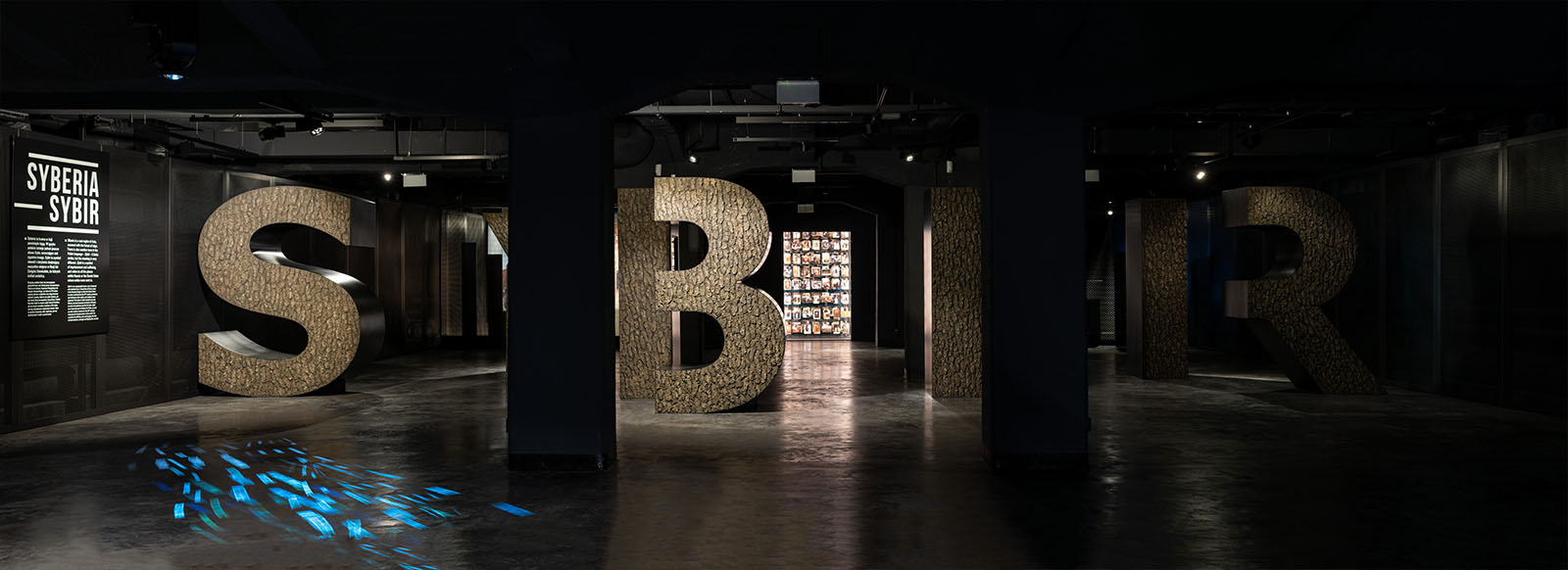
Locally and globally: our actions
The Sybir Memorial Museum is concerned not only with the exhibition, but also a scientific research covering the wide range of topics. Information related to the centuries-long, both forced and voluntary, presence of Poles deep within Russia, from the 16th century to the present day is collected as well as processed there. The Museum’s researchers collect, register, and analyze the testimonies of people who were forcibly resettled and imprisoned in the labor camps of the Gulag system (lagers) and their descendants, as well as secure and examine objects and source documents. The Museum’s scientific activities are of an international nature and testimonies of participants and witnesses of events or their descendants are collected not only in Poland but also in many countries across Europe and other continents. So far, archival materials and testimonies have been collected in countries such as Mexico, New Zealand, Kazakhstan, and Argentina. Due to that, the materials collected by the Museum draw attention to the global perspective of the Polish deportees and their descendants fate.
The Sybir Memorial Museum operation is also aimed to publishing in order to popularize knowledge. It publishes a bilingual (Polish-English), richly illustrated series of books. It has also published a five-volume series titled “Sybir” presenting an overview of the history of the Polish eastern lands and Sybir. In the collection of the Museum’s publications especially important are the memoirs of deportees, which are published in various forms, including comics.
Our seat – a witness of history
The Sybir Memorial Museum is located in Białystok, on the area of 1930s military warehouses. Between 1940 and 1941, transports of deportees to Siberia and Kazakhstan departed from the nearby Poleski Railway Station, just a few hundred meters away.
The building of the Museum combines historic and modern elements. The pre-war warehouse has been adapted for the permanent exhibition space. The modern part includes the Museum’s administration, as well as a conference room and a restaurant.
Between these two parts, along the warehouse ramp, there are railway tracks going into the interior of the building, where the largest exhibit of the Museum is presented — a Russian freight wagon. This type of wagon was used to transport deportees to Siberia and Kazakhstan.
Permanent Exhibition
The permanent exhibition of the Sybir Memorial Museum is located on three floors of the military warehouse. The space of 2,500 square meters presents, among others, life on the eastern lands of Poland before World War II, the presence of Poles in Siberia during the Tsarist era, the specifics of the Soviet occupation of Polish territories, deportations deep into the Soviet Union, and the realities of life in the northern part of Russia, Siberia, and Kazakhstan, where people were exiled, deported, and imprisoned in labor camps.
The exhibition uses multimedia but is based on exhibits which most of all are memorabilia of the repressed people. The testimonies and memories of the deported people and their personal stories are an integral part of the exhibition.
The most important awards
- The Council of Europe Museum Prize 2024
- The European Museum Academy “Luigi Micheletti Award” 2024 – special commendation
- The Best Tourist Product of the Podlaskie Voivodeship 2024 – Certificate of Polish Tourist Organization
- Historical Event of the Year 2021 — the opening of the Sybir Memorial Museum
- The Museum Event of the Year 2021 “Sybilla” Competition – recognition for the permanent exhibition of the Sybir Memorial Museum
- The Best Brand of the Podlaskie Voivodeship of the Year 2021
- Top Municipal Investment 2020
- Top Investment of Eastern Poland 2019
- Competition by the Polish Association of Construction Engineers and Technicians ‘Construction of the Year 2019-2020 in the North-Eastern Region’ – special prize


